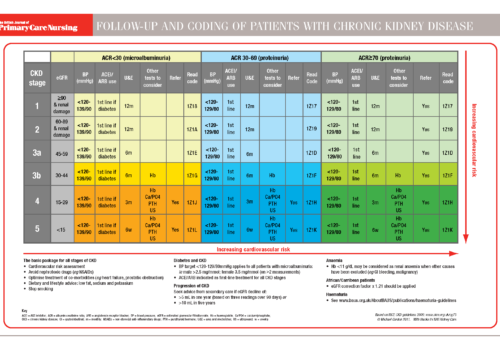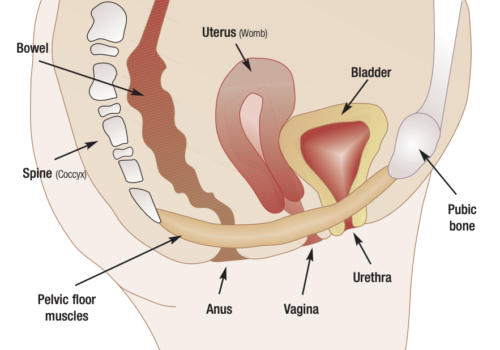NICE recommends that all patients with diabetes should be offered a structured educational programme at diagnosis, together with regular reviews and updates. Several programmes are available that meet NICE criteria, and there is evidence that they can help to improve patients’ quality of life, well-being and diabetic control.
Editorial
Sometimes I feel like a nephron. These hard-working filters keep on working regardless of the pressure of blood flowing into the kidney. In just the same way, practice nurses must stay at the job no matter how many patients stream through the doors of the surgery. What is more, just as the kidney compensates when it loses nephrons, practice nurses take on more work to make sure that patients do not suffer when staffing levels fall.
Why – and when – to check urea and electrolytes
Urea and electrolytes (U&E) are the most commonly requested tests that we send to the laboratory. In fact, U&E are so routine that it is easy to take them for granted, but they are an essential aid to the diagnosis of kidney disease. It is important for practice nurses to understand why and when U&E are ordered, and how to act on the results if kidney problems are suspected.
Stable angina: the no tears review
Approximately 5% of adults aged over 40 years have stable angina, appear on our coronary heart disease (CHD) registers and are recalled at least annually for reviews. People with angina are often prescribed four or more regular items, and it is widely believed that patients are more likely to take their medicines effectively when they agree to their prescription and feel involved in decision-making. The medication review involves patients in prescribing decisions, and supports them in taking their medicines most effectively, so improving health outcomes and satisfaction with their care.
CPR: to breathe or not to breathe?
UK guidelines recommend hands-only cardiopulmonary resuscitation (CPR) as an option for untrained people, or when ventilation is difficult. But standard CPR with ventilation remains best practice, and it is vital to ensure that everyone in the practice knows how to use basic life support to save a patient’s life after cardiac arrest.
The portfolio diet: healthier lipids in the bag?
Lifestyle modification for people at high cardiovascular risk includes positive changes to their diet. The portfolio diet is a new approach to lowering cholesterol that builds on a conventional cardioprotective diet by including specific foods that are known to target abnormal lipids.
Danger: clots kill! Controlling risk factors for thrombosis
Clots are life-saving in the right place at the right time, when they can stop us bleeding to death. But a clot in the wrong place can spell disaster, leading to heart attack, stroke, deep vein thrombosis or pulmonary embolism. This article explains why life-threatening clots can develop so quickly, what can be done to prevent them, and how each type of clot is treated.
Back to Basics: Follow-up and coding of patients with chronic kidney disease
Narrowing the heart health gap in severe mental illness
Deaths from cardiovascular disease have fallen over the last 20 years but people with schizophrenia and bipolar illness have not shared in these benefits. At the end of last year the first National Audit of Schizophrenia highlighted important deficiencies in management. A systematic care pathway, and straightforward screening, treatment and follow-up in primary care could reduce the continuing health inequalities experienced by people with severe mental illness.
Editorial
For over two years now, I have been worrying that my editorial will be out of date by the time you read it because the Department of Health has published its sexual health policy document. At the time of writing, the document has yet to appear (though the Department’s website still reassures us it is due to be published in 2012). So local authorities may be taking over responsibility for contraception and sexual health in a public health policy vacuum. If this is the case, it can only compound current variations in provision, especially of long-acting reversible contraception (LARC).
Guest editorial
Teenage conceptions continue to raise interest in the media, with young people often demonised about their early or allegedly frequent sexual activity. When conception rates are published, commentators waste no time in telling us how dreadful the situation is and how we compare with other Western European countries. Of course, we are not like our neighbours in Europe, as we do not have mandatory sex education for all young people, and we live in a highly sexualised society where sex is often the material for jokes.
Teach pelvic floor muscle exercises
Over the past 30 years a wealth of research has proved the benefits of pelvic floor muscle exercises (PFME) in treating both urinary incontinence and pelvic organ prolapse. However, patients in some areas may have to wait some time for an appointment with specialist continence services. So it makes sense for primary care professionals to know how to teach PFME to their patients.

























